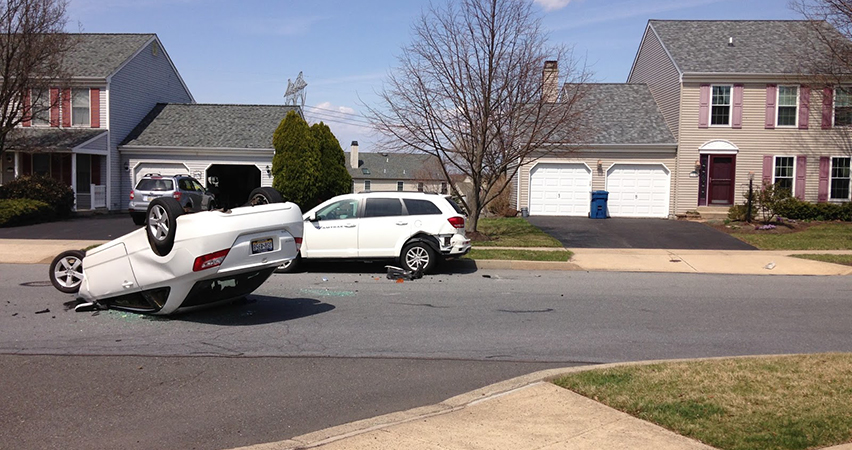Over half of all vehicle accidents occur within five miles of the victim’s home.
When most people think of where car accidents occur, they probably picture a major highway with speeding speeding vehicles, or stop light intersections. In reality, however, the facts show differently. A 2005 study determined that 25% of all vehicle accidents occured within less than one mile from the victims residence. The same study found that over 52% of all vehicle accidents happen within 5 miles of the victims residence.
Determining Who Is At Fault
Most drivers feel at ease in the familiar surroundings of their own neighborhoods. This may contribute to a false sense of security, or over confidence that may result in negligence. A driver backing out of his or her own driveway might be less focused on their surroundings because they are familiar, for example. If you happen to be traveling down a residential street, and a vehicle suddenly backs out of their drive, causing an accident, it’s likely that the person backing out is at fault. In general, the right-of-way belongs to traffic driving down the street, and the driver backing out failed to yield to oncoming traffic.
Who Has the Right of Way?
The legal definition for “right-of-way” is:
“…in traffic ordinances, a driver is entitled to the “right of way” to proceed first ahead of other vehicles or pedestrians, depending on certain rules of the road, such as the first to reach an intersection. Failure to yield the right of way to the vehicle or person entitled to it can result in a citation and fine, to say nothing of an accident. It can also be evidence of negligence in a lawsuit for injuries suffered in an accident.”
This clear definition helps in determining fault in automobile accidents. Drivers traveling along a road with no signals, stop, or yield signs generally has the right-of-way, and if another driver hits them because they failed to yield, then usually that driver is determined to be liable for the accident. This rule also applies when an accident occurs involving a vehicle pulling out of their driveway in front of an oncoming vehicle.
Damage Sustained by the Vehicle
A second factor that helps determine liability is the damage suffered by the involved vehicles. This includes the location, amount, and severity of the damage to all vehicles involved in the incident. Perhaps a car pulling out of the driveway had rear-end damage, and the vehicle that was traveling the road has side damage. In this case, the damage indicates that the accident was the fault of the driver backing out. However, if the car driving down the street has only front-end damage, and the car from the driveway has side damage, it could be more complicated, and the “rules of the road” will have to be clarified in that case.
After a collision, it’s very possible each driver will have a different recall of the accident, of their actions, and experience of it. It’s incredibly rare for all parties in an accident to have stories that all align. If you have been the victim of a car accident, then you need expert help from experienced auto accident attorneys. Call the Law Offices of Zappettini and Bradley at (916) 457-5022. We will help you understand your legal rights and fight for any compensation you should receive.

